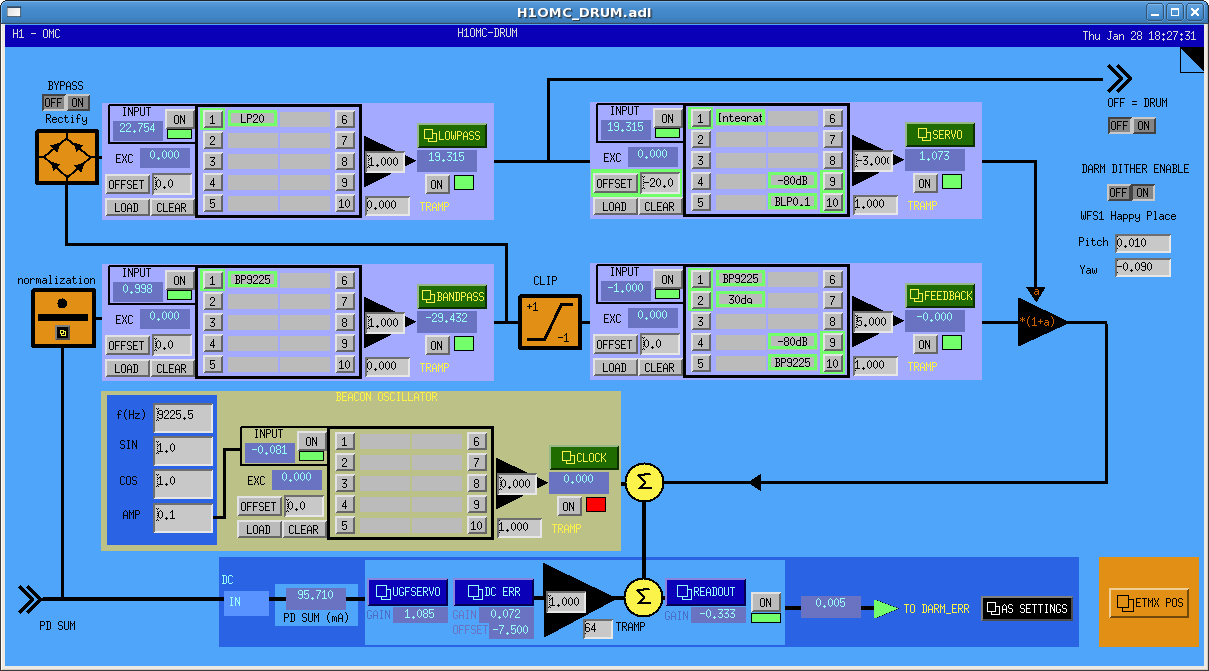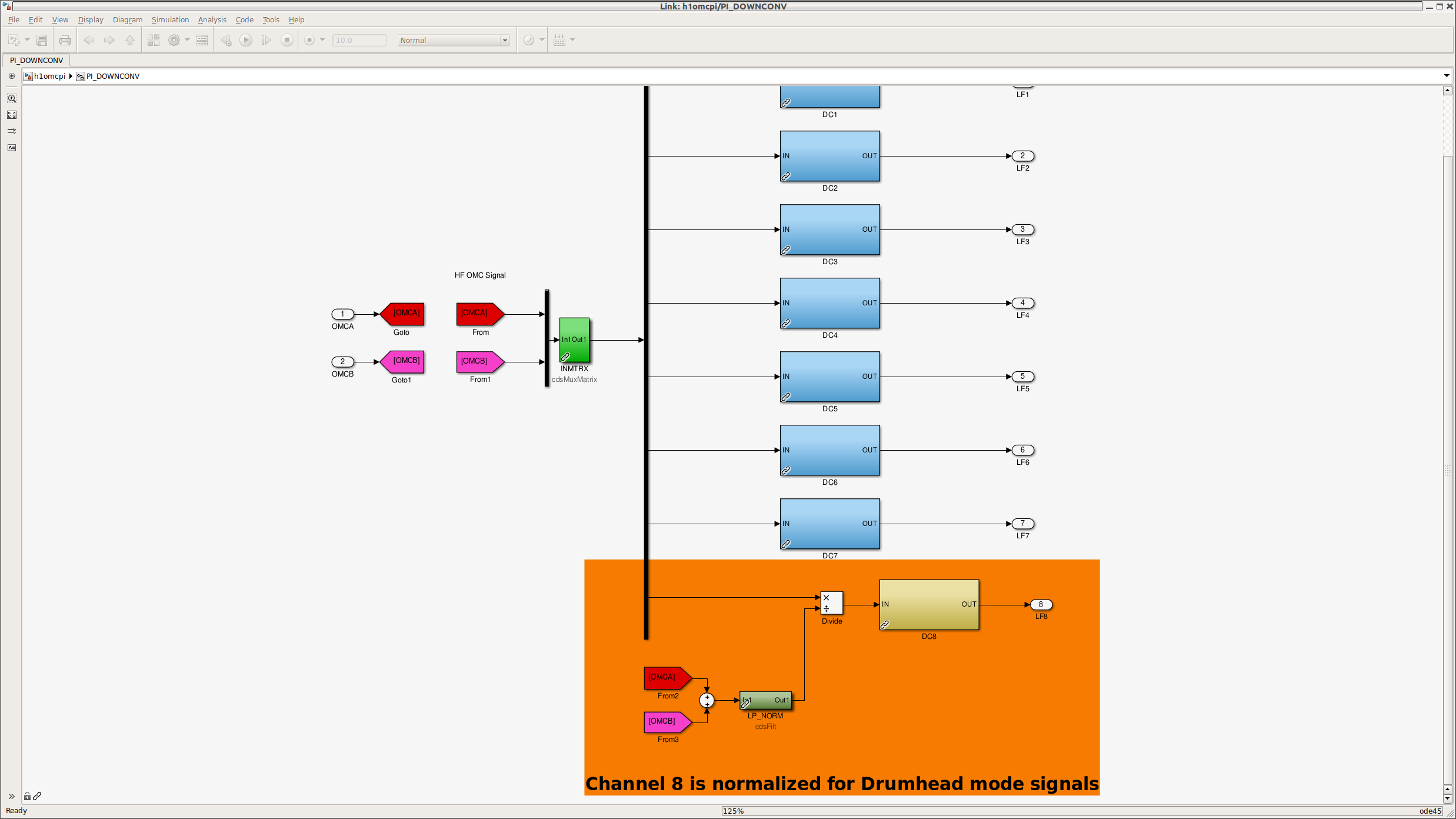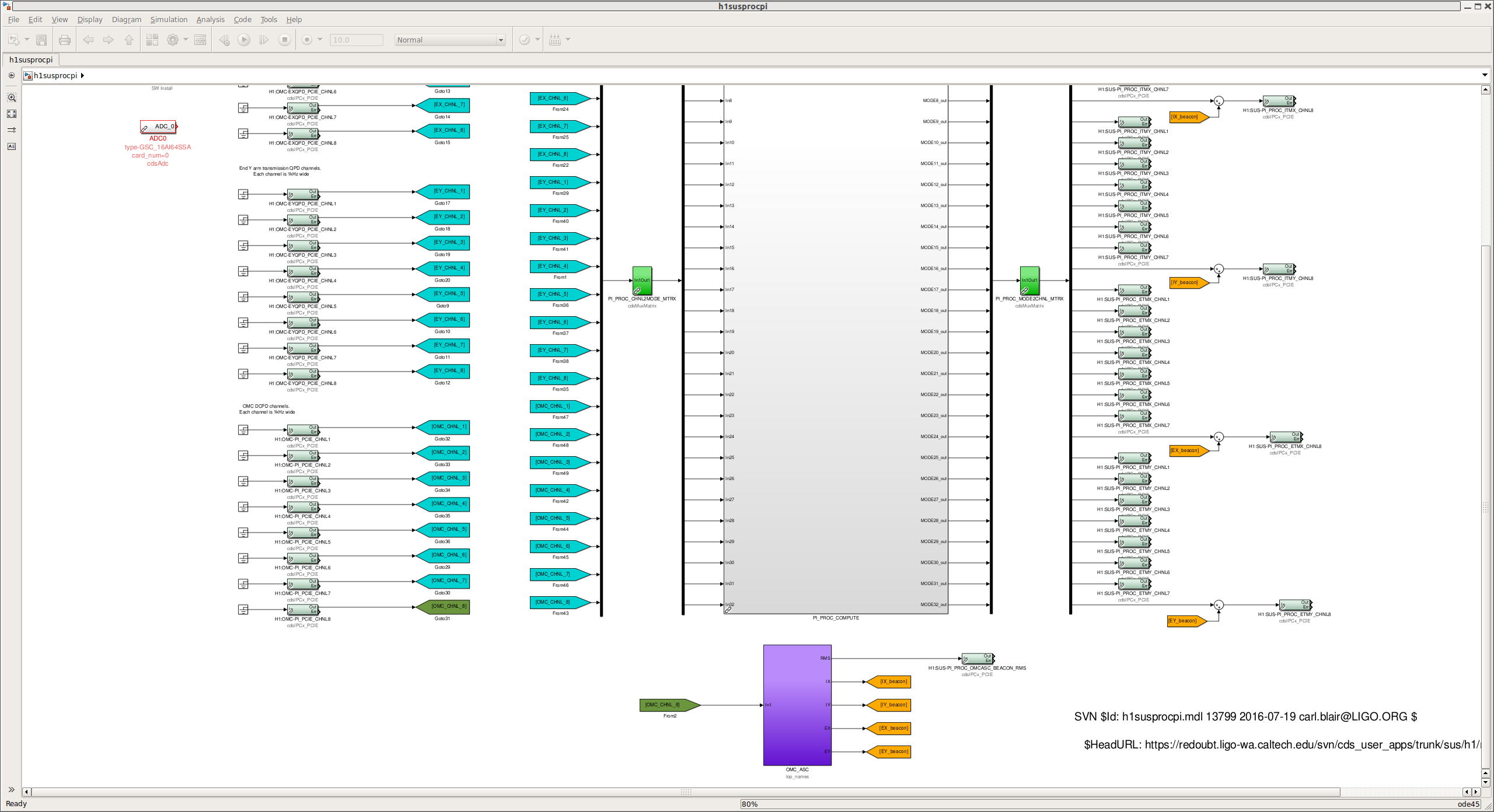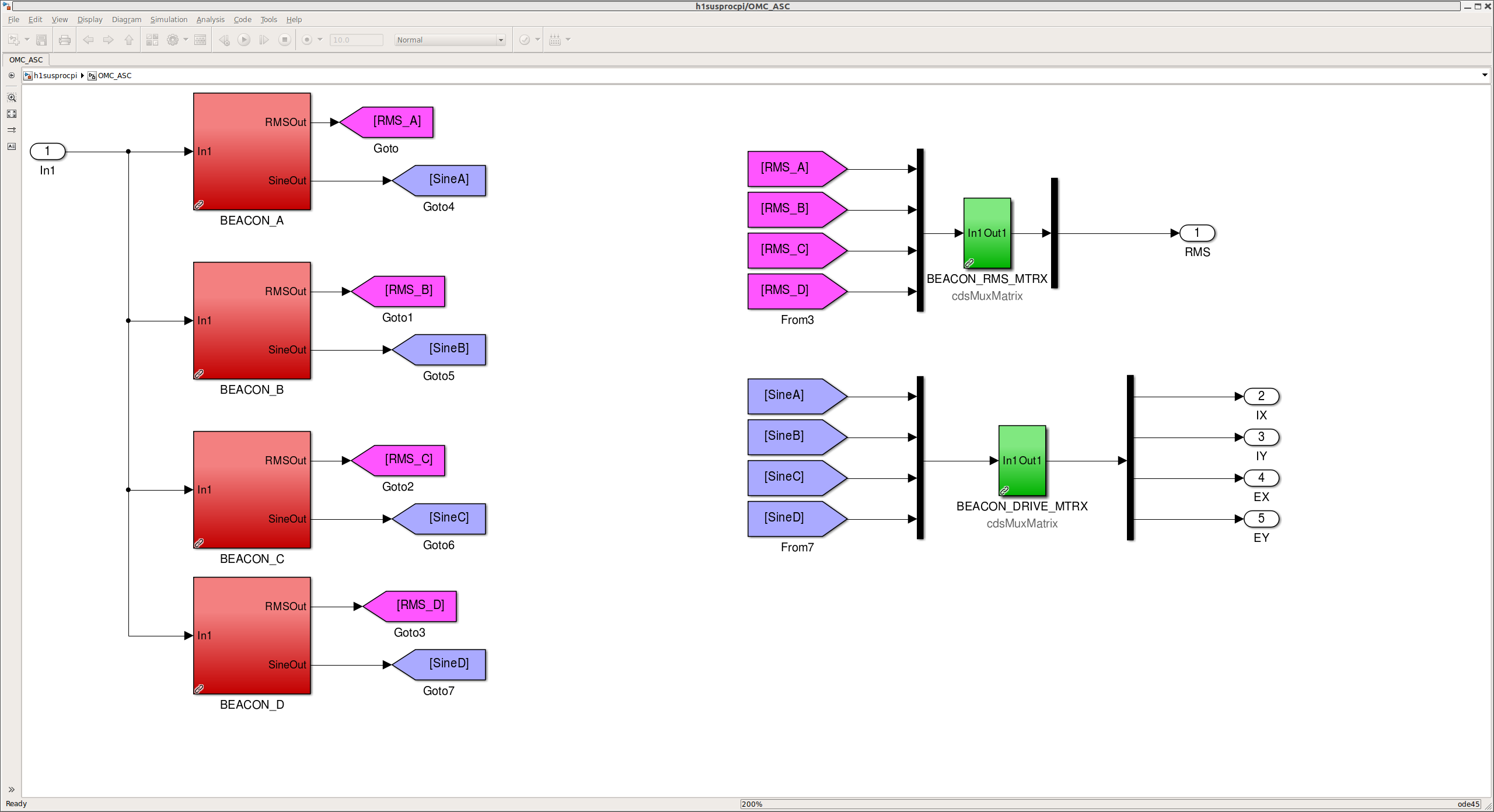New PI code
Kiwamu, Dave:
Kiwamu installed new h1omcpi and h1susprocpi code. DAQ was restarted
New NGN code for CBRS
Krishna, Chris, Jenne, Jim, Dave:
Jenne added a CBRS component (Compact BRS) to h1ngn. We discovered a conflict with DAC channel allocation, so for now the new code is not driving DACs. Tomorrow we will swap DAC channels between h1pemcs and h1ngn. DAQ was restarted.
Timing FPGA upgrade at EX
Daniel, Ansel, Jim, Dave:
Daniel installed the latest FPGA code on the fanout at EX. This required a power cycle of the front end computers. We did not power cycle irig-b, comparator or RF amps.
Investigation into strange signal behaviour seen during timing upgrades
Daniel, Hugh, Jim W, Ansel, Patrick, Jim, Dave:
A reminder, during the timing system upgrades on 19th May 2015 and 19th July 2016 we saw surprising behaviour of HEPI fluid pressures (they appeared to quickly increase) and the vacuum cold cathode gauges (they saw a slight increase over a long time base of several hours).
To investigate this further, we powered down the EY front ends and went through the same power sequence as we followed during the 19 July upgrade. We quickly found that when the IO Chassis for h1seiey was powered up (with the h1seiey computer powered down) the hepi pump controller reported an increase of the hydraulic fluid pressure from 80 to 107 (as was seen May 2015 and July 2016). We powered down the IOC chassis and all AA and AI chassis. We powered up the IO Chassis and then, one at a time, each AA and AI chassis. When we powered up the AI chassis for the first DAC, the problem reappeared. This DAC is used by h1hpietmy model to drive the HEPI Valve Controller chassis. At this point it was looking more like a real fluid pressure increase. This was confirmed at EX during the timing upgrade by viewing the mechanical fluid pressure gauge attached to the pump station, it reported the increase in pressure from 80 to 115.
The sequence is (from a fully powered down state): the IO Chassis is powered up, the fluid pressure increases over several seconds from 80 to 105. When the h1seie[y,x] computer is powered up, the pressure drops immediately at the time the power button is pressed (before the OS is loaded and any models are started). Specifically, when the One-Stop expansion card in the IO Chassis is activated the fluid pressure drops.
To prevent any run-away issues, the hepi pump controller at both end stations were set into manual mode during these tests and returned to auto PID control later.
On the test stand, we found that a 16bit DAC card, when the IO Chassis is powered up, outputs 9.97V. It stays at this voltage until the front end computer is powered up, at which time its output voltage drops to -0.1V. Hugh thinks that this large voltage drive to the valve controller could be causing a back pressure to the pump station. One way to prevent this would be to power down the AI Chassis prior to the frontend/IO-Chassis power cycle, and only power the AI back on when all the code is running and the DAC channels are being fully controlled.
We saw evidence of different power up behaviour with 18bit DAC cards, and some variation depending upon which PCI slot they are in. Investigation is continuing.
We suspect the cold cathode signal change is associated with chamber cooling when the ISI and SUS drives are deactivated for a long period of time (many hours). We see daily variations of CC signals which match the room temperature's daily variation.
Bottom line, these signals appear to be real and not caused by software or electrical issues linking dissimilar systems in unknown ways. There is no connection to the reprogramming of the timing system, this activity just provided the power sequence which allowed these issues to emerge.





















